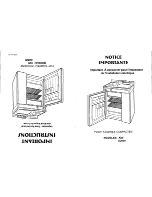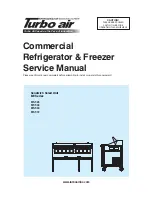
recesses and adjacent parts.
Don’t overlook parts of the appliance such as the humidity
controller, light casing, racks, egg and butter compartments, ice
cube tray, and all of the drainage areas, etc.
If the appliance is not kept clean and in good condition, its surface
could deteriorate and inexorably affect the length of its service
life, and could lead to a dangerous situation.
The appliance must not be steam cleaned.
Use only a non-abrasive sponge, rinse with clean water then dry
thoroughly before putting the parts back in place.
Never use abrasive cleaning products or hard metal scrapers to
clean the appliance, as they could scratch the surfaces and break
down the coating.
After cleaning, leave the inside of the appliance to dry with the
door open before plugging it into the mains again.
When re-stocking the appliance, be especially careful not to hit,
scratch, crack or break the internal surfaces.
GB
GB
Clean the door gasket with mild soap and water. Use a soft cloth
or sponge to clean the inside of the refrigerator, with two
tablespoons of baking soda and a quart of warm water.
Then rinse with water and wipe clean, and open the door and dry
it naturally before the power is turned on.
For areas that are difficult to clean in the refrigerator (such as
narrow sandwiches, gaps or corners), it is recommended to wipe
them regularly with a soft rag, soft brush, etc. and when
necessary, combined with some auxiliary tools (such as thin
sticks) to ensure no contaminant accumulation in these areas.
Do not use soap, detergent, scrub powder, spray cleaner, etc., as
these may cause odors in the interior of the refrigerator.
Clean the bottle frame, shelves and drawers with a mild
detergent and dry with a soft cloth.
Wipe the outer surface of the refrigerator with a soft cloth
dampened with soapy water, detergent, etc., and then wipe dry.
Do not use hard brushes, clean steel balls, wire brushes, abrasives,
such as toothpastes, organic solvents (such as alcohol, acetone,
banana oil, etc.), boiling water, acid or alkaline items clean
refrigerator considering that this may damage the fridge surface
and interior.
Boiling water and benzene may deform or damage plastic parts.
Do not rinse with water so as not to affect the electrical insulation
properties.
It is advisable to clean the appliance regularly and to remove any
food deposits or splashes; in particular, clean the door seals,
54
55
Summary of Contents for CT6520NFIL
Page 4: ...AVERTISSEMENTS FR FR 4 5...


































